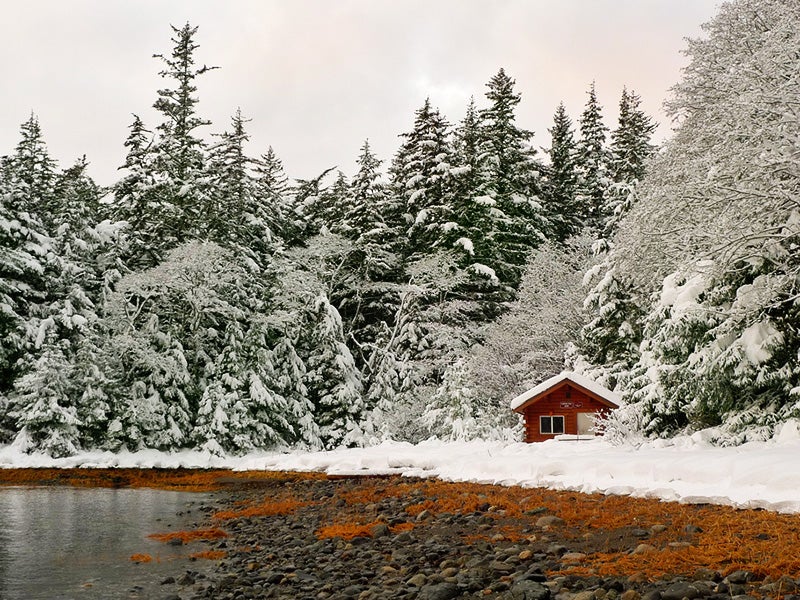Saving Alaska’s Ancient Trees
As my family and others decorate our Christmas trees, some of their oldest-remaining ancestors are at risk of being chopped down.

This page was published 8 years ago. Find the latest on Earthjustice’s work.
In my family and in many other families across the nation, decorating a Christmas tree remains a celebrated centerpiece of the holiday season that can be traced back to early rituals designed to liven up homes during the dark days of winter solstice.
But as we adorn our lush evergreen with lights and ornaments, their grand ancestors face an unprecedented threat of getting chopped down in Alaska’s Tongass National Forest.
The Tongass, a 17-million-acre expanse of land stretching from the southern tip of Prince of Wales Island to the Hubbard Glacier just north of Yakutat, is unique in this world. It’s one of the last places on earth with large expanses of old-growth forest, and it’s home to nearly one-third of all old-growth temperate rainforest remaining in the entire world. The most iconic tree species in the Tongass, and the one most targeted for logging, is the Sitka Spruce, a large, coniferous evergreen tree.
In addition to centuries-old towering trees, the Tongass’ majestic, emerald landscape is filled with ice fields, glaciers, and rivers and fjords flowing among thousands of islands. It’s also full of wildlife like Sitka blacktail deer, wolves, brown bears and mountain goats. (Tongass wildlife fun fact: More bald eagles live in this region than in any other place in the world.) Many people depend on the Tongass’ vast resources—from Alaska Natives who have continuously inhabited southeast Alaska and the Tongass for thousands of years, to commercial fishermen and tourism operators.
Yet despite its majesty and importance to the local people, the Tongass is also the only national forest in the country where large-scale clearcut logging of old-growth forests is still allowed. Earthjustice has worked to stop logging in the Tongass since its founding in 1971. This past September, Earthjustice won the latest round in a decades-long battle to include the Tongass as part of the 2001 Roadless Rule, which protects wild forests nationwide from most logging and road construction in roadless areas of national forests.
But like the evergreen needles you uncover in your carpets months after the holiday season, threats to the Tongass just keep popping up. Legislators will soon vote on a year-end spending bill riddled with anti-environmental provisions, including two introduced by Sen. Lisa Murkowski (R-AK). One would gut Roadless Rule protections for the Tongass (and Alaska’s other national forest, the Chugach) and another would repeal recent changes to the Tongass forest plan, which protects high-value habitat like roadless areas and begins to transitions the Tongass slowly away from old-growth logging.
In addition to the environmental costs, the industrial old-growth logging program is a money loser, to the tune of more than $20 million per year, and it only supports about a hundred jobs. In fact, taxpayers lose 93 cents for every dollar spent logging the ancient Tongass trees. In contrast, the tourism, recreation and fishing industries in southeast Alaska, which depend on a vibrant Tongass ecosystem, are the economic powerhouses of the region, generating billions and supporting thousands of jobs.
“The Tongass is not for sale, and our public lands deserve to be valued over illogical industry wish lists,” says Earthjustice policy advocate Tracy Coppola.
Centuries ago, ancient peoples decorated their houses with evergreen boughs during the winter solstice to remind them of all the green plants that would grow again when the sun god was strong and summer returned. And so as my family decorates our own tree, I am reminded that the magnificence of the Tongass National Forest still holds the ancient ancestors of my family’s holiday centerpiece, and we should continue to do everything we can to protect it.
Opened in 1978, our Alaska regional office works to safeguard public lands, waters, and wildlife from destructive oil and gas drilling, mining, and logging, and to protect the region's marine and coastal ecosystems.